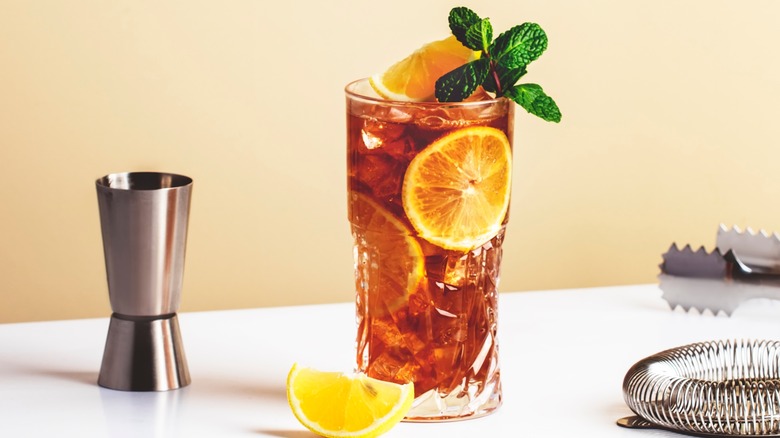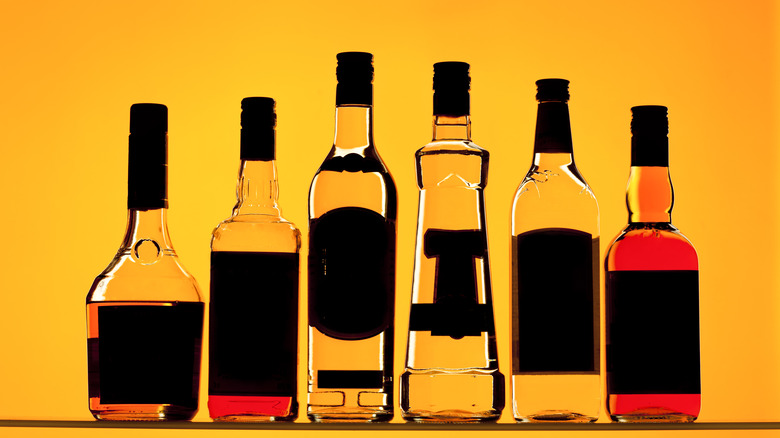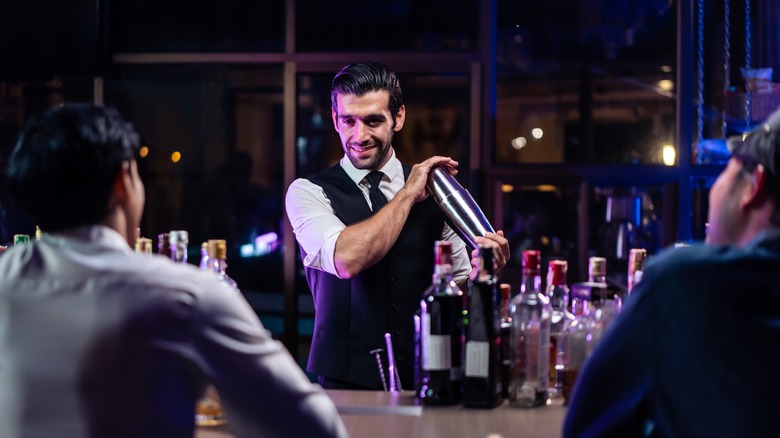The Reason Long Island Iced Teas Sound Alarm Bells To Bartenders
The infamous Long Island Iced Tea is revered and reviled in equal measure for its sickly sweet taste and for inspiring nights you almost can't help but forget. This drink, popular among college students and those who seek the strongest drinks possible, regardless of taste, is controversial, to say the least. In fact, some bartenders even refuse to make it, and many more probably wish they could say no when patrons request it.
Ask any bartender, and they'll likely have a list of drinks they hate making. One of the most common offenders is the Long Island Iced Tea. With around eight ingredients, this drink is a beast to prepare, especially in a busy bar where bartenders are trying to push orders out as quickly as possible. The even bigger challenge is dealing with the increasingly rowdy patrons who order it; since Long Island Iced Teas are so alcoholic, they may contribute to bad behavior more than lower-ABV beverages.
How does alcohol affect behavior?
With more than twice the alcohol content of what the National Institute on Alcohol Abuse and Alcoholism considers to be one standard alcoholic beverage, the Long Island Iced Tea is the perfect drink for those who want to get drunk quickly. Due to its blend of liquors, people often can't even taste the alcohol, making it easier to consume more than usual. While this may signal a good time for many, it also creates an ideal environment for various bad behaviors to emerge.
Alcohol is a central nervous system depressant that affects brain areas responsible for movement, memory, self-control, and basic functions like hunger and thirst. It impacts the frontal lobe, which manages emotional regulation, decision-making, impulse control, behavior, and planning. When alcohol suppresses these functions, it can lead to increased and often exaggerated expressions of thoughts and emotions, including anger. This phenomenon where normal decision-making and judgment are disrupted by alcohol consumption is known as disinhibition theory.
As drinks like the Long Island Iced Tea, with their high alcohol content, are consumed, patrons often exhibit different and more impulsive behaviors, including violence. In fact, the National Council on Alcoholism and Drug Dependence reports that alcohol is a factor in 40% of violent crimes. Bars do not always have security guards on duty, so it is often left to bartenders to cut off drunk patrons and manage rowdy crowds.
Why so many ingredients?
And to make matters even worse for the bartenders? The drink is hard to make, especially when the bar is crowded. While this iced, brown cocktail, garnished with a lemon, appears deceptively simple and innocent, don't be fooled. Most Long Island Iced Tea recipes boast no fewer than eight distinct ingredients — and that's not even counting the ice.
According to the International Bartenders Association, the official recipe calls for gin, vodka, white rum, tequila, and triple sec. The non-alcoholic components include lemon juice, simple syrup, and a splash of cola. Once you've gathered your ingredients, simply mix the drink. Sounds easy enough, right? Not quite. Try gathering all these ingredients, along with any special requests for the type of liquor used, while other patrons yell drink orders at you. Fun, right?
The next time you want one of these sweet drinks, take a minute and think of your bartender. How would they feel?


